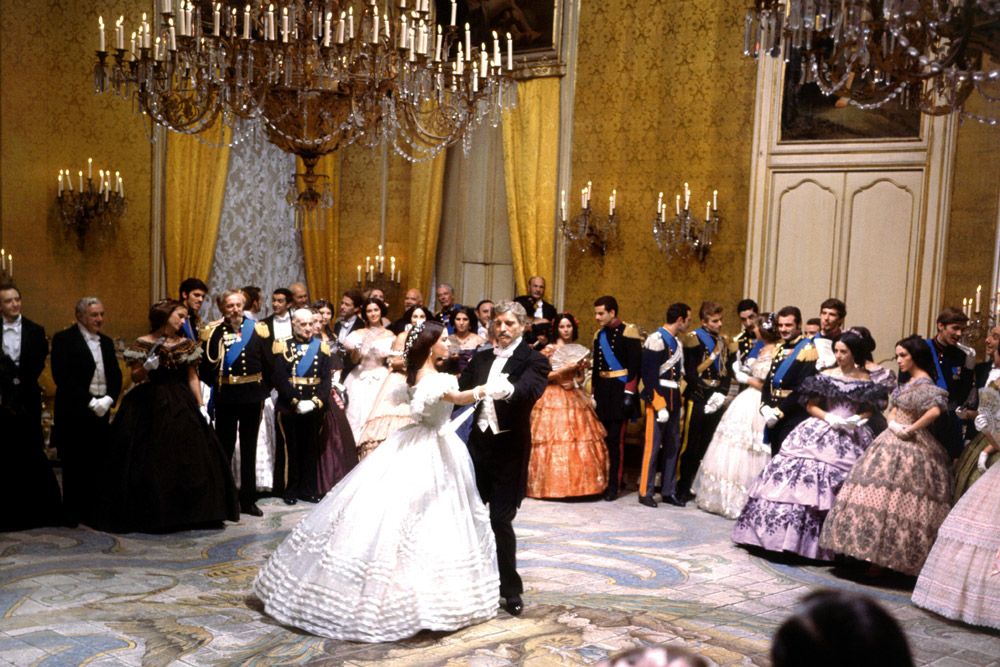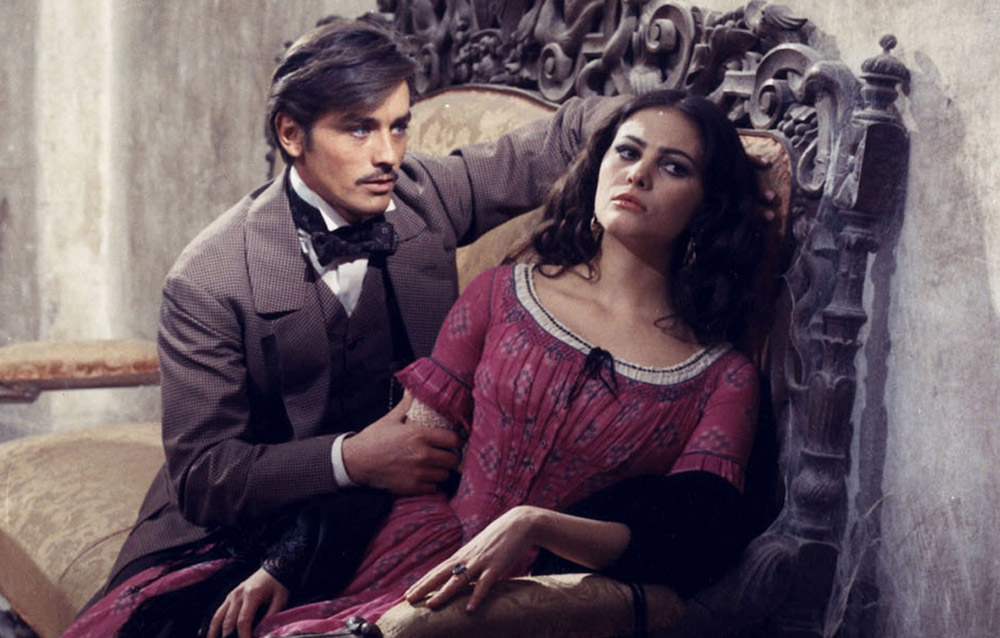
“The Leopard” The extraordinary spirit of “authenticity” that pervades Visconti’s masterpiece
2019.03.12
Things depicted in the ball scene, which occupies one-third of the total.
The main character, the Duke of Salina, steps into a ball. The scene is so legendary that it blows your mind, so much so that when you think of ``The Leopard,'' you think of a ball. What is surprising is its length. In the original story, the text is about 40 out of 400 pages, but in the movie version, it is turned into a huge spectacle that takes up one-third of the total.
Of course, since we're talking about Visconti, we won't try to cover up these shoots on set. He is the one who knows best that if he does something flimsy like that, his disguise will peel off right away on screen.
The building used was a real aristocratic mansion. Of course, there is no freedom to change the height of pillars, walls, or ceilings. It is said that 20 actors and 242 extras (one-third of them were real aristocrats) were invited into the huge container. The filming took place over an additional 36 days, from 8pm to 4am due to the summer heat. A huge amount of costume preparation and dressing took place before that, and dance lessons were also essential, so it seemed like every day on set was a whirlwind.

In addition to the high temperatures, the use of reflectors caused the temperature at the site to rise further. There are even stories of how the thousands of candles that provided the light were treated with special chemicals to prevent them from melting. The heat, the sweat running down my forehead. Paper scraps dancing on the floor. Music that never stops. A dance that continues even when the night begins to fade. All of the expressions will take your breath away, and you'll lose track of time as you stare at them for a moment.
What stands out in such a situation is the image of the Duke of Salina, who is weaving his way through the crowd at the ball. The contrast between this ``individual'' and ``the crowd'' becomes strikingly striking.
There, he disciplines himself to remain unwavering in the currents of the times, but as if being pushed by the currents, he arrives at a quiet room, where he sees a painting that gives him a premonition of his own death. A visual poem unfolds as if the situation and mental image are slowly coming together. The process, which can be called the wandering of the soul, is simply amazing.
If you look at the interview with Visconti included in the aforementioned ``Visconti Masterpieces Collection 3,'' there is a part where he describes the ball scene as ``a temporal expansion that could be called an exaggeration.'' The reason why the series of scenes took up one-third of the main story is that ``This is not a change to the original work, but rather a reflection of the various conflicts, colors, values, and scenes contained within the pages of this wonderful book.'' This was done from the perspective of symbolically summarizing the
Indeed, Visconti tried to faithfully depict the work in line with the original work. On top of that, he uses what he calls the ``language of film'' to ``condense'' everything into this ball scene. Is that why it's so overwhelming? People donate and return. Gather and disperse. Just when you think you've escaped the vortex, you're sucked into it again. We cannot wait for the passage of time.

The story depicts the rapid flow of time, the change of generations, life and death in a fantastical flow of time, and the scene in which the Duke of Salina suddenly stops and wipes his tears is close to my heart. It could be said that this is a fluid depiction of time and memory, typical of Visconti, who loved Proust's ``In Search of Lost Time'' and even aspired to make it into a film. This unusual yet delicate style of drawing continues to captivate our hearts even after more than 50 years have passed. In today's world, you will never come across such a depiction again.
References
“Luchino Visconti” Esquire Magazine Japan/2006
“Reading Italian Cinema” by Kazuhiro Yanagisawa/Film Art Co., Ltd./2001
“Portrait of Luchino Visconti” Kinema Junpo/2016
"Visconti Masterpiece Collection 3 The Leopard" Translated by Hiroo Mizoguchi / Shinshokan / 1981
“The Leopard” written by Tomasi di Lampedusa / translated by Akira Kobayashi / 2008
Text: USHIZU ATSUNOBU
Born in Nagasaki in 1977. When he was 3 years old, he saw ``Superman II'' with his father and became fascinated with movies. After The Graduate from Meiji University, he worked for a movie broadcasting channel and then became a movie writer. Currently, in addition to writing for Eiga.com, EYESCREAM, Real Sound Movie Club, etc., he also contributes to media press and theater programs.
“The Leopard 4K restored version”
From March 17, 2019 (Sunday), Tokyo Metropolitan Museum of Photography Hall and other locations nationwide
Distribution: Crest International
Official website: www.crest-inter.co.jp
*Information as of March 2019 article publication.

